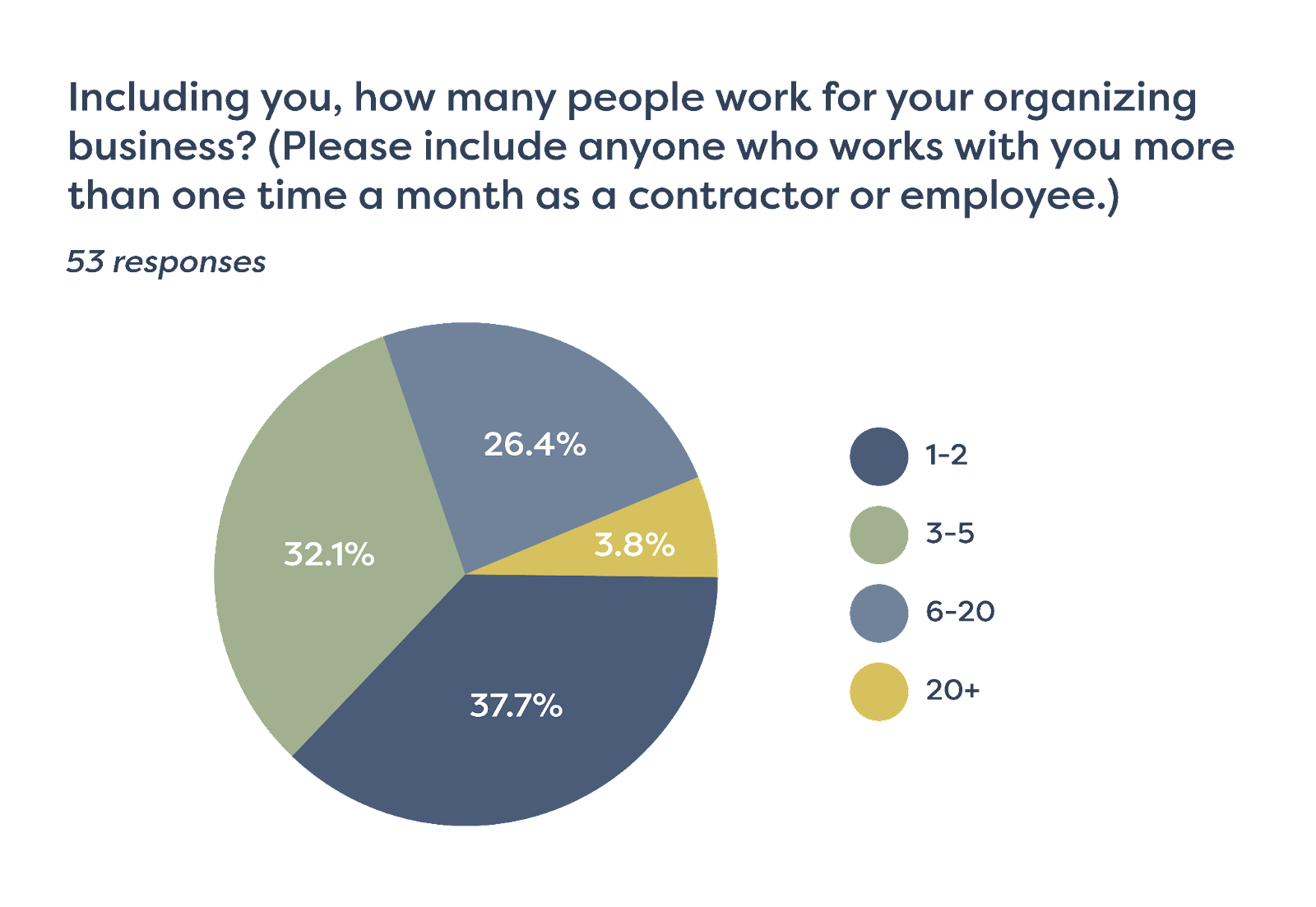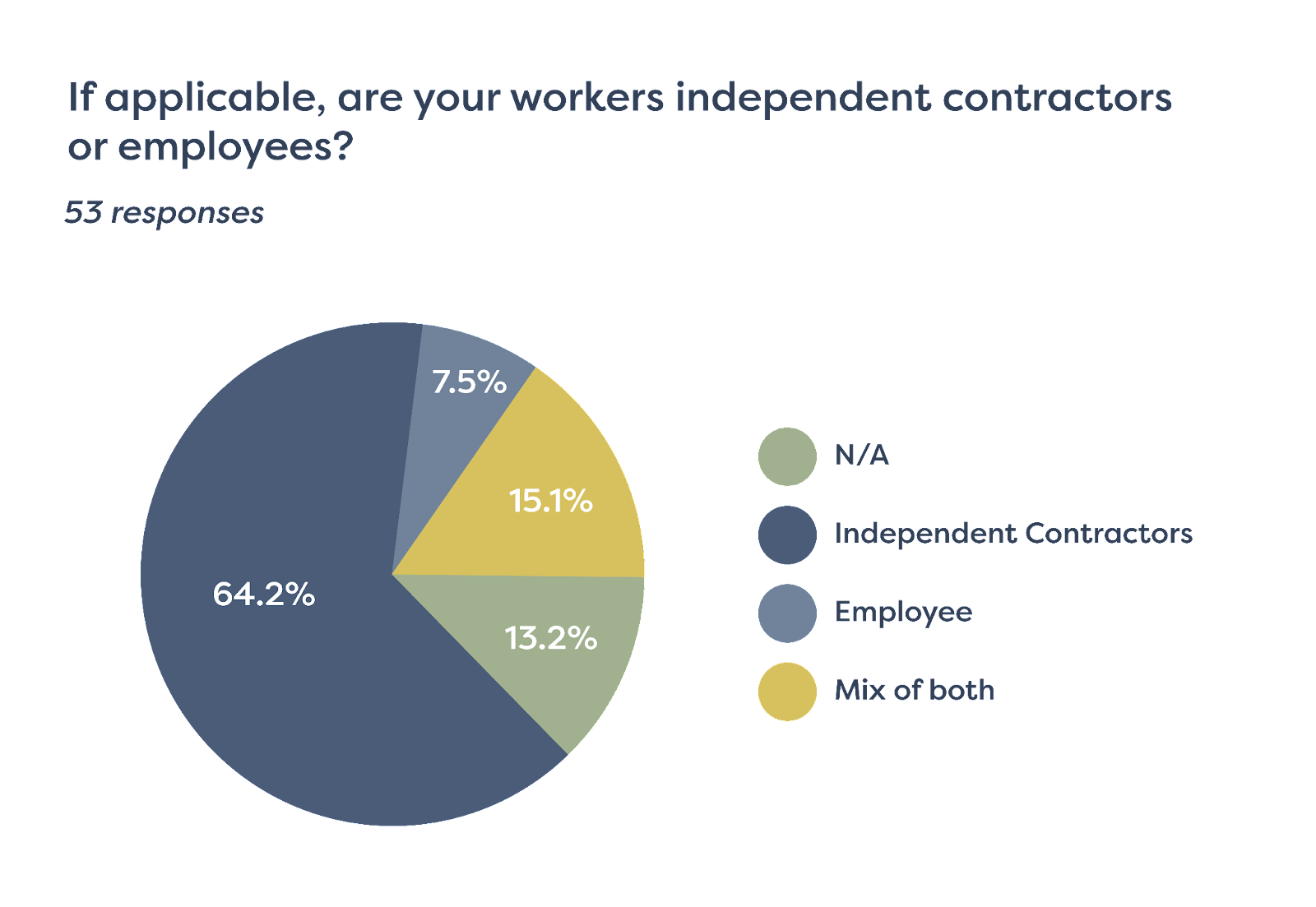Inside the business of home organizing: Putting people first!
Our team is our why. We create awesome jobs that support women. Clients who hire Reset Your Nest to organize their home are also investing in their community. We believe in win/win economics.

This is a bonus for the business of home organizing. Click here to read Part I and here to read Part II and Part III
In a recent three-part series on the business of home organizing, I shared the opportunity and costs of owning a home organizing business. One of the major insights was that for organizers to generate revenue for their business above $100,000, they need to create teams.
Hiring a few people to go out on home projects helps the project go faster and makes the time spent organizing more enjoyable (if you hire the right people!) The hiring and creation of new jobs in this industry is an important part of the equation in the business of home organizing. Unfortunately, it’s also usually something that happens unintentionally from a place of filling a temporary need, rather than consciously creating quality job opportunities for a new professional trade labor. Today, we’re talking about how we hire organizers and create better jobs for everyone in our industry. Home organization should be about making homes beautiful and lives better for everyone involved.
Reset Your Nest has a mission to empower women and support families.
We exist to create home-organizing jobs with flexible employment hours, higher hourly wages, and livable incomes. For us, it is important to understand what an owner is capable of making, but it is equally important to consider the quality of life for someone who works as an organizer.
Because we care about the financial health of our organizers, we are intentional about the types of jobs we are creating. Organizers depend on being able to either supplement their income or, in some cases, fully support their families with the paychecks we are generating. There is still a lot we are figuring out as we work to create reliable work, but we talk about the quality of the work experience for our team members as often as possible. It makes us unique as an employer.
We understand how each individual home organizer might feel like the decisions they make about employment don’t impact many people—after all, 70 percent employ six or fewer individuals. However, if we estimate that there are approximately 5,000 organizer companies in the US, and our survey data about employment is directionally correct (see chart below), there are likely an additional 24,000 people who go out at least once a month to organize a home professionally.

So while the decisions about how you classify and compensate your team feel small, the implications about the quality of employment that a new industry of home organizing will offer are massive.
What are the levers for making home organizing a great job?
Several components define the quality of a worker’s experience:
- Classification
- Compensation
- Training
- Scheduling
- Satisfaction
Job Classification
The way you classify your team members matters. It impacts the benefits they are eligible to receive, the training and support being offered, and the quality of services you can offer clients.

What we’re seeing:
According to our 2022 survey, 70 percent of home organizers hire independent contractors, who don’t benefit from safety nets like workers’ compensation or retirement accounts. Most workers do not meet the definition of an “independent contractor”—for example, they’re likely only working for one home organizing company—but the industry is small enough that regulators have not cracked down on this practice.
How we’re doing it differently:
Reset Your Nest conducts a full interview process, including reference and background checks, before hiring an organizer as an employee. They receive our Reset Your Nest Method training program and follow a code of conduct when entering homes. We are able to offer all of them workers’ compensation and still maintain flexible hours and schedules for part-time hourly wages.
Organizer Compensation
Pay rates for organizers are not available for the home organizing industry, as owners typically do not publish their pay rates. Without industry compensation standards, organizing team members don’t know if they are getting a fair rate, and organizing companies are unable to compete in their regions for top talent.
What we’re seeing:
Workers lack transparency and cannot advocate for competitive pay because it’s impossible to understand if a wage is fair without transparent rates across the industry.
How we’re doing it differently:
As I shared in a previous post about how we invest in our team, Reset Your Nest pay rates are 70% higher than domestic workers’ national averages. We are setting policies in place to help our team create emergency savings and retirement accounts. Our North Star is MIT’s living wage calculator, and we are working toward a vision where communities value household labor and paying accordingly. Our pay rates are different by state to account for cost of living. For example, in California rates start at $29.00 an hour and grows to $53.00 an hour, based on experience and role. By comparison, in our area in California, the median hourly rate for home services is $20.69 which demonstrates our commitment to better pay, for everyone, nationally.
Job Training
Job training can be a sensitive topic for many organizers who hire independent contractors. They don’t want to cross boundaries by telling workers how to do the work, which would indicate that the workers should instead be classified as (and receive the benefits due to) employees.
What we’re seeing:
It’s expensive and time-consuming to offer additional, paid training. We’ve met very few organizers who invest the time and money to train team members outside of a job site. In general, the basic skills of home organization are assumed to be innate (you have them or you don’t!), and the rest is learned on the fly, in the client’s home and on the client’s dime.
How we’re doing it differently:
We offer a Reset Your Nest Method program that includes 5 levels of home organizing and teaches anyone interested in learning the skills of home organizing how to improve, with specific guides for every room in a home. In addition to onsite training, each of our employees receives about five hours of initial (paid) training, and then ongoing paid training and professional development as their skills grow.
Job Schedule
One of the defining benefits for a home organizer across teams is a greater degree of flexibility offered for scheduling work days. In our experience, high-paying and flexible job schedules are the most valued characteristics of these jobs for the momconomy. That said, more consistent work and regular hours is the number one request that we hear.
What we’re seeing:
Companies schedule teams either by asking them to post availability and assigning them to jobs, or based on a first come-first serve signup form.
How we’re doing it differently:
We have tried both scheduling models and are moving toward assigning team members based on their availability. Organizers told us they didn’t like the stress of a first-come, first-serve schedule and wanted us to equitably distribute jobs based on their preferred workload and dates of availability. While we don’t (yet!) have consistent 9 a.m. - 3 p.m. work opportunities five days a week, we continue to work to achieve this consistency, and our team is aware that we cannot guarantee hours.
Job Satisfaction
We would love to hear more from other organizers on this topic. Do you track retention rates? Employee satisfaction (SAT) scores? How do you hear what is working and what can be improved by your team? Sharing data can feel scary, but it can also be incredibly powerful to help everyone have more transparency and a better understanding regarding whether they are offering fair employment. Keeping this information hidden is bad for our work economy, and ultimately bad for organizers who want to take care of their team.
What we’re seeing:
Very little. This isn’t talked about often, and the focus tends to be on the experience of managing a team rather than on being part of that team. We would love to hear from other organizers and especially learn from those who are team members with other organizers. What’s your experience?
How we’re doing it differently:
If it matters to our team, it matters to us. We have an open meeting invitation for any organizer to book time with anyone on the leadership team. We also share a chat channel if team members want to connect informally. Every month we have an All Hands meeting where we share our progress and make time for questions. Twice a year we collect an anonymous pulse survey to collect more formal feedback and metrics for issues that people don’t feel comfortable sharing with attribution.
Our satisfaction score is 4.2 out of 5 possible points with only five team members ranking us a 3 or lower. The most cited reason for our rating is due to the lack of consistency in job availability. Knowing this information is incredibly useful and allows us to make sure we are talking regularly with all our team members about what we are working on and how we are striving to get better every day. If other organizers want to know how we gather and report on this, please let us know, and we would be happy to help you get started. I would love to give you our employee template so that you can start hearing regularly from your team and taking their preferences into account in your planning process.
We asked our team to share 3 words each that describe our values as a company, here’s what our team shared with us. To format this image we simply copied and pasted the words into a word cloud shaped as a house. How cool is this!?!

Hey fellow organizers,
We’d love to hear from you. What’s your experience? Please, share your comments and let’s talk more…
It’s important to get all the above components right for the sake of the organizers, but also for the long-term health of an organizing business and the larger industry. We are working hard to be accountable actors in this field and to be as transparent as possible about what the industry looks like and how we fit as a part of the emerging companies.
Reset Your Nest and our family of brands want to be known as a company that pays well and cares about our teammates. Beyond our direct influence, we know that other organizers feel the same and truly love their teams. Let’s collectively commit to create fair and awesome jobs for the estimated 24,000 workers who are enabling this industry to exist.
If we are companies created by women, let us be companies that are created for women.
Tell us how you value your team and create a great work environment. We know we don’t know it all, and we want to learn from you and make our own team even stronger!
